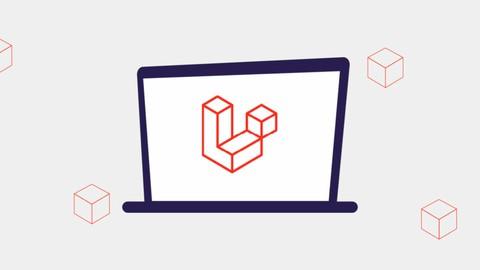Last Updated on October 14, 2023 by GeeksGod
Course : PHP with Laravel 2023: Build CMS Blog with Admin Panel
If you’re interested in learning how to build a CMS blog with PHP Laravel, this course is perfect for you. Throughout the course, you will learn how to create a complete content management system (CMS) with the Laravel PHP framework. You’ll be creating your CMS from scratch, complete with page, user, and blog management capabilities.The course is designed to be hands-on, so you will be working on real-world projects throughout the course. You will learn how to use PHP Laravel to create a dynamic and interactive web application that is both functional and user-friendly. By the end of the course, you will have a complete CMS blog that you can use as a template for your own web applications.Here’s what you can expect to learn in the course:
How to install and set up PHP Laravel
One of the first things you will learn in this course is how to install and set up PHP Laravel. Laravel is a popular PHP framework that provides a solid foundation for building web applications. You will learn how to download and install Laravel on your local machine, as well as how to set up a development environment. This includes configuring your database connection and installing any necessary dependencies.
How to create a database and connect it to your application
A key component of any CMS is its database. In this course, you will learn how to create a database for your CMS blog and connect it to your application. You will learn how to use migrations to create and update database tables, as well as how to use Laravel’s ORM (Object Relational Mapping) to interact with your database. This will allow you to easily perform CRUD (Create, Read, Update, Delete) operations on your database.
How to create a user authentication system
User authentication is an essential feature of any CMS. In this course, you will learn how to implement a user authentication system using Laravel’s built-in authentication scaffolding. This will allow users to sign up, log in, and manage their account information. You will also learn how to restrict access to certain pages and actions based on a user’s authentication status or role.
How to integrate your own theme
In addition to the core functionality of your CMS blog, you will also learn how to customize its appearance. Laravel makes it easy to integrate your own theme into your application using its powerful templating system. You will learn how to create and apply custom CSS stylesheets, as well as how to use Laravel’s Blade templating engine to dynamically generate HTML content. This will allow you to create a unique and visually appealing user interface for your CMS blog.
How to create a full posting system
A key feature of any blog is the ability to create and manage posts. In this course, you will learn how to create a full posting system for your CMS blog. This includes creating a form for users to submit new posts, as well as implementing functionality to edit and delete existing posts. You will also learn how to display a list of all posts on your blog’s homepage, as well as how to create individual post pages with unique URLs.
How to create a full categories system
Organizing your posts into categories is a great way to improve the navigation and organization of your CMS blog. In this course, you will learn how to create a full categories system for your blog. This includes creating a database table to store categories, as well as implementing functionality to assign posts to categories and display posts based on their category.
How to create a commenting system
Engaging with your readers is an important aspect of any blog. In this course, you will learn how to create a commenting system for your CMS blog. This includes creating a form for users to submit comments on posts, as well as implementing functionality to display and manage comments. You will also learn how to implement basic moderation features, such as the ability to approve or delete comments.
How to create a search system
Allowing users to search for specific content on your blog can greatly enhance the user experience. In this course, you will learn how to create a search system for your CMS blog. This includes implementing functionality to search for posts based on their title or content, as well as displaying search results in a user-friendly manner. You will also learn how to handle search queries efficiently, even with a large number of posts.
How to build a custom admin panel
An admin panel is essential for managing the content of your CMS blog. In this course, you will learn how to build a custom admin panel using Laravel’s built-in features. This includes creating a separate authentication system for administrators, as well as implementing functionality to add, edit, and delete posts and categories. You will also learn how to provide a user-friendly interface for managing comments and performing other administrative tasks.
How to work with MVC structure
Throughout this course, you will gain a deep understanding of the Model-View-Controller (MVC) architectural pattern. Laravel follows the MVC structure, which separates the different components of your application into distinct layers. You will learn how to create models to represent your database tables, views to render HTML content, and controllers to handle user requests and perform business logic. Understanding the MVC structure will make your code more organized, maintainable, and scalable.
In conclusion, this course is a comprehensive guide to building a CMS blog with PHP Laravel. Whether you are a beginner or an experienced developer, this course will provide you with the knowledge and skills to create a fully functional and user-friendly CMS blog. Enroll in the course today and take your web development skills to the next level!
Free Udemy Coupon
CMS Blog














